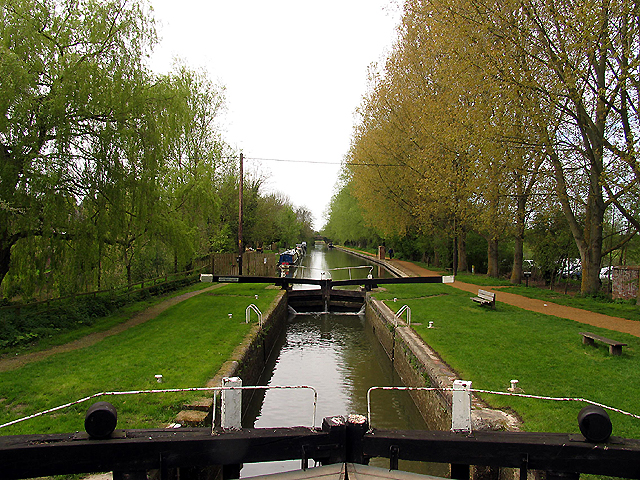Location is always a vital part of my novels. I think of the setting as another character in the books. My work in progress, tentatively titled The Green Ribbons is set in a small village in Berkshire at the turn of the twentieth century. Sometimes I stick with real places and names – especially for large cities – but when it’s a smaller place I like to rename it to give myself more licence to make up stuff.
I borrowed heavily from a place I once lived in when creating the village of Nettlestock. It’s called Kintbury and is on the Kennet and Avon Canal in Berkshire. The picture above shows the cottage I used to live in – it dates from the sixteenth century and was originally an open-hall dwelling – one room with a hearth in the centre and a hole in the roof for the smoke to escape. In the second half of the sixteenth century a chimney was added and an upper floor constructed. What was then a single dwelling house was divided and in the nineteenth century another house was tagged on the end (on the left hand side of the photo above) so it is now a row of three joined cottages. The cottage must have held many secrets. Alas it doesn’t feature in the new book!
Kintbury also has literary connections – Jane Austen frequently stayed in the village – in the previous vicarage on the site of the current Old Vicarage (built in the 19th century) when her sister Cassandra was engaged to the vicar’s son. The Old Vicarage, a splendid Gothic creation on the banks of the canal, is now home to author Robert Harris (Pompei, Fatherland, The Ghost, Imperium etc).
It was in my cottage in Kintbury that my two laptops containing the manuscript of A Greater World were stolen – forcing me to sit down and start all over again! I sold the cottage about seven years ago – after the burglary I never felt the same about the place.
Ingleton Hall in my book is very loosely based on Barton Hall in Kintbury – now the home of Sir Terence Conran, the designer and creator of the Habitat chain of stores and the Conran Shop. In the book it is the home of the local squire. Barton Hall was the family home of the Dundas family. Mr Charles Dundas was a member of Parliament, Chair of the Quarter Sessions and a man at the heart of local affairs. He was also Chair of the Kennet and Avon Canal Company.

Kintbury Lock © Copyright Pam Brophy and licensed for reuse under this Creative Commons License
The characters in the book often walk along the canal towpath. This was created in the eighteenth century – right at the end of the garden of The Old Vicarage – so Jane Austen would have witnessed the navvies constructing it. At the time of my novel it had fallen into disuse by most commercial traffic in favour of the railway. Nowadays it is busy with barge-dwellers and holidaymakers, keen to travel through southern England by water. When my nephews were small boys they loved helping open the lock gates to passing boats.
Kintbury had traditionally been the home to two important industries – the production of whiting, used for powdering wigs and faces and later as an ingredient in talcum powder. The Kintbury works involved open-cast mining of chalk, and the whiting was shipped from the Kintbury factory to London and Bristol by barges on the canal. With the advent of the railway this method of transportation died out. The whiting works were closed sometime during the second world war. Kintbury’s second key industry was silk production. This had already ceased by the time of The Green Ribbons in 1900 – the factory closing in the 1840s, due to cheap imports of silk from the continent. So in 1900, when the book begins, Kintbury/ Nettlestock was more or less reliant on agriculture – itself suffering due to cheap American and Russian grain imports. Many of the villagers left the area in the nineteenth century and headed for the factories and mills of the prosperous Northern cities.


0 Comments